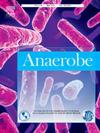在 DNA 提取过程中,氧气暴露会降低一些厌氧细菌和细菌群落的高分子量 DNA 的产量。
IF 2.6
3区 生物学
Q3 MICROBIOLOGY
引用次数: 0
摘要
目标:第三代测序的核心挑战在于满足对 DNA 质量(完整性和纯度)和数量的要求。因此,需要对 DNA 提取方法进行新的改进,以满足这些要求。我们推断,在厌氧微生物群落中,某些严格厌氧菌含有氧激活的 DNase 活性,如果暴露在空气中,可能会大大降低提取的元基因组 DNA(或某些纯培养物的基因组 DNA)的完整性:为了验证这一假设,我们开发了一种增强型基因组和元基因组 DNA 分离技术,并将其应用于一组特选的严格厌氧菌和耐气厌氧菌,以及一种食草海鱼的后肠微生物群:结果:考虑到在厌氧条件下和有氧条件下提取的DNA的质量(或降解),我们发现从一些严格厌氧菌细胞中有氧提取的DNA比在厌氧条件下提取的DNA降解得更多。与此相反,在所选的耐气厌氧菌中,有氧和无氧条件下提取的 DNA 分子大小没有明显差异。与有氧条件相比,厌氧条件下从鱼类后肠微生物群中提取的元基因组DNA产量更高、质量更好:我们的研究有效证明了我们改进的提取方案在厌氧条件下的优势。结论:我们的研究有效地证明了我们改进的提取方案在厌氧条件下的优势,提取的 DNA 质量明显提高。这些发现可能对研究,尤其是元基因组研究很有价值,因为DNA的质量和数量对下游分析至关重要。本文章由计算机程序翻译,如有差异,请以英文原文为准。
Oxygen exposure decreases the yield of high-molecular-weight DNA from some anaerobic bacteria and bacterial communities during DNA extraction
Objectives
The central challenge in third-generation sequencing lies in meeting the requirements for DNA quality (integrity and purity) and quantity. Therefore, novel improvements in DNA extraction methods are needed to satisfy these requirements. We reasoned that in anaerobic microbial communities, the presence of certain strict anaerobes containing oxygen-activated DNase activity might contribute substantially to the poor integrity of extracted metagenomic DNA (or genomic DNA from some pure cultures) if exposed to air.
Methods
To test this hypothesis, we developed an enhanced genomic and metagenomic DNA isolation technique that we applied to a specifically chosen set of both strict and aerotolerant anaerobes, as well as to the hindgut microbiota of a herbivorous marine fish.
Results
Considering the quality (or degradation) of extracted DNA obtained under anaerobic versus aerobic conditions, we found that DNA extracted aerobically from cells of some strict anaerobes showed more degradation of high molecular weight DNA than analogous preparations under anaerobic conditions. In contrast, with the selected aerotolerant anaerobes, no discernible difference was found between the molecular sizes of DNA extracted aerobically and anaerobically. Metagenomic DNA extracted from the fish hindgut microbiota showed higher yields and better quality under anaerobic conditions compared to aerobic conditions.
Conclusion
Our study effectively demonstrates the advantages of our improved extraction protocol in anaerobic conditions. This is evident through the improved quality of extracted DNA. Such findings may be valuable for studies, especially metagenomic studies, where the quality and quantity of DNA are crucial for downstream analysis.
求助全文
通过发布文献求助,成功后即可免费获取论文全文。
去求助
来源期刊

Anaerobe
生物-微生物学
CiteScore
5.20
自引率
8.70%
发文量
137
审稿时长
76 days
期刊介绍:
Anaerobe is essential reading for those who wish to remain at the forefront of discoveries relating to life processes of strictly anaerobes. The journal is multi-disciplinary, and provides a unique forum for those investigating anaerobic organisms that cause infections in humans and animals, as well as anaerobes that play roles in microbiomes or environmental processes.
Anaerobe publishes reviews, mini reviews, original research articles, notes and case reports. Relevant topics fall into the broad categories of anaerobes in human and animal diseases, anaerobes in the microbiome, anaerobes in the environment, diagnosis of anaerobes in clinical microbiology laboratories, molecular biology, genetics, pathogenesis, toxins and antibiotic susceptibility of anaerobic bacteria.
 求助内容:
求助内容: 应助结果提醒方式:
应助结果提醒方式:


